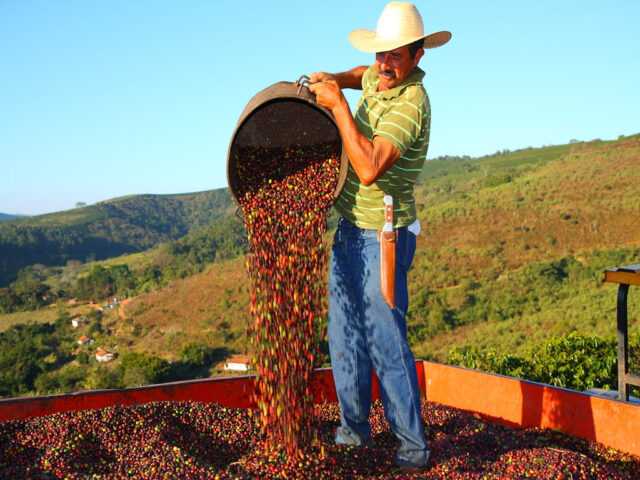SAO PAULO, Brazil – Arabica coffee prices dropped steeply in the Brazilian market in the first fortnight of June, pressed down by both the harvesting and the dollar depreciation against Real, by 3.5% between May 29 and June 15.
Thus, in the first week of June, the CEPEA/ESALQ Index for the arabica coffee type 6 (delivered in São Paulo) resumed closing below 500 BRL per 60-kilo bag, near the real level registered in early February/2020 (values were deflated by the IGP-DI from May/20). As regards robusta, prices dropped in the first half of the month too.
On June 15, the CEPEA/ESALQ Index for the arabica coffee closed at 467.09 BRL (90.70 USD)/60-kilo bag, a steep 9% down compared to that on May 29. As regards robusta, the CEPEA/ESALQ Index for the robusta type 6, screen 13, Espírito Santo State, closed at 337.13 BRL (65.46 USD) per 60-kilo bag on June 15, 2.2% down compared to that on May 29.
Harvesting of the Arabica crop
The weather has been favoring the harvesting of the 2020/21 arabica coffee crops. Agents reported that activities were stepping up in the first fortnight of June, mainly where the harvesting is mechanized. Both the quality and size of the new beans in the market are considered good, despite a high share of green beans.
According to Cepea surveys, until the end of the first fortnight of June, the harvesting had most advanced in northwestern Paraná and in Garça (SP), having reached from 30 to 50% in the first area and from 20 to 30% in the second.
Robusta
Despite sporadic rains, the weather has been favoring the harvesting of the Brazilian 2020/21 robusta crop, which is advancing. In Espírito Santo State (ES), the biggest robusta-producing state in Brazil, from 40 to 50% of the expected volume had been harvested until June 12.
Still, occasional complaints about a lack of labor were reported in ES in the first half of June, due to the social distancing advice related to the covid-19 pandemic. Agents claim that, besides the difficulties to bring workers from other states, many coffee growers opted for employing a lower number of workers, aiming to better adapt to the current phytosanitary standards. Thus, activities pace has been slightly slower than that last crop.
As regards production, in spite of the expectations for a large harvest and high quality this season, some growers still believe there will be a 20 to 30% reduction compared to the 2019/20 crop. This scenario may be linked to the unfavorable weather during flowering and to the debilitated condition of crops after the high outputs in the last two seasons.
In Rondônia, however, agents have not reported lower production or problems with labor. The harvesting is at a fast pace: until June 12, from 70 to 85% of the total volume had been harvested. It is worth to mention that the quality and size of the beans have been higher this season than in 2019/20, while the amount of defects has been lower.
Exports
Despite the uncertainties about the demand for coffee, the Brazilian exports had a good performance in May. Although shipments last month were 17.7% lower than in April and 23.3% below that in May/19, the volume exported totaled 2.98 million bags, which is considered high for the month and for a negative biennial cycle (2019/20).
It is worth to mention that the Brazilian coffee exports between March and May 2020 (critical period considering the covid-19 pandemic) were similar to the volume exported in the same period last year (when the record 2018/19 crop was being marketed), totaling nearly 10 million bags.
Brazilian exports have been favored by the firm demand, since coffee-purchasing countries fear supply shortages, and also because of the dollar appreciation against Real.


















